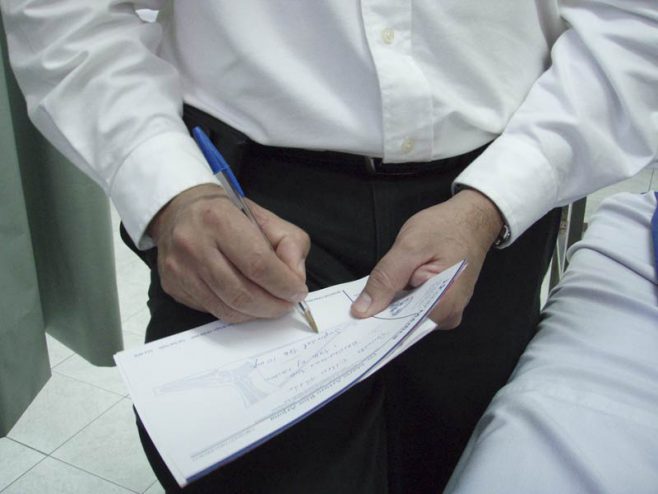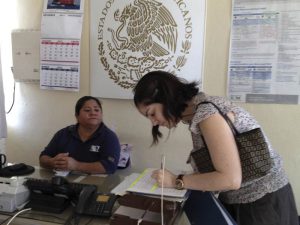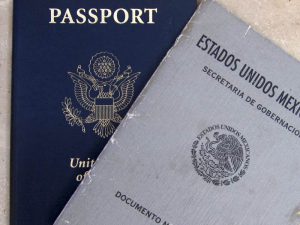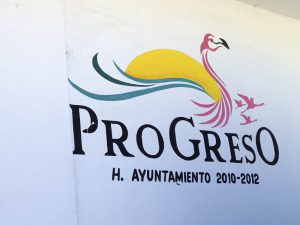Swine Flu (H1N1 virus) in Yucatán
By now, this strain of influenza which started either in Mexico or the United States in early March 2009, has spread throughout the world. When it first appeared, experts thought it was a stronger strain of virus than the common flu. The H1N1 flu produced very strong symptoms in some patients, and not in others, and was frightening at first for its uncommon unpredictability.
Since last May, in Yucatan, as elsewhere in Mexico, the government has been advertising to the entire population about how to recognize, treat and hopefully prevent the incidence of Swine flu. Here’s what you may see on signs and in advertisements throughout Mexico about H1N1:
Signs and Symptoms:
- Temperature over 38 degrees Celsius(100 Fahrenheit)
- Feeling hot, and a sore throat
- Dry cough and irritated eyes
- Headache that begins intensely
- Body aches or joint pain
- Weakness and feeling tired
- Runny nose
- May have diarrhea or vomiting
- Difficulty breathing
If you have one or more of these symptoms, and you suspect you might have the flu, the best thing to do is stay home. Do not go to work or outside the house; drink liquids; cover your nose and mouth; above all wash your hands after sneezing or coughing. Advise your family members or a close friend to keep watch over you. If the fever, cough, headache or general aches and pains continue, then you must see your doctor.
Recommendations for Prevention
- Keep your distance from people with respiratory infections.
- Do not greet people with a kiss or handshake.
- Do not share food, glasses or silverware.
- Ventilate and allow the sun to enter the house, offices and all closed places.
- Keep kitchen and bathroom counters, water faucets and handrails clean. Also clean toys, telephones, door handles or other commonly-used objects.
- If you have a sudden high fever, cough, headache, aches and pains and pain in the joints, immediately see your doctor or healthcare provider.
- Cover up and avoid quick changes in temperature
- Eat fruits and vegetables that are rich in vitamins A and C (carrots, papaya, guayaba, oranges, mandarin orange, limes, lemons, pineapple).
- Wash your hands frequently with soap and water.
- Avoid exposure to environmental contaminants.
- Do not smoke in closed areas or close to children, seniors or the sick.
- If you show any of the symptoms, see your doctor immediately.
- Use a nose and mouth mask when in crowded places.
Try not to panic or become alarmed. Following these recommendations will greatly reduce your risk of catching this disease or spreading it. Remember that the sooner the virus is detected, the greater the possibilities of controlling it and preventing a tragedy.
Many people here followed this advice, including wearing masks in public places, especially in the spring and summer of last year. Tourism to Mexico and the Yucatan fell precipitously when the media reported that the flu was mostly in Mexico, and has been steadily climbing back up as the H1N1 flu spread around the world and as it became apparent that it was no less dangerous than the common yearly flu.
Incidence of H1N1, Here and Around the World
The first H1N1 flu incident was recognized in Mexico in March 2009. By April, the first incident was reported in the United States (although it had been recognized a month earlier), and on April 26, “the first cases of novel influenza A (H1N1) virus infection outside of the United States and Mexico were reported in Canada.” By May 6, 309 people had laboratory-confirmed cases of H1N1 in 21 countries outside of Mexico and the United States.
As of February 2010, the 2009 H1N1 virus is still quite prevalent around the world. According to the Center for Disease Control,
Based on FluNet data collected by 27 countries from January 31, 2010 to February 6, 2010, 93% of specimens testing positive for influenza were typed as influenza A and 7% as influenza B. Out of all subtyped influenza A viruses, 97% were 2009 H1N1 positive. (http://www.cdc.gov/h1n1flu/updates/international/)
And in the latest update from the World Health Organization, we can see that almost 16,000 deaths in total have been attributed to it thus far:
As of 14 February 2010, worldwide more than 212 countries and overseas territories or communities have reported laboratory confirmed cases of pandemic influenza H1N1 2009, including at least 15,921 deaths.
If you didn’t know better, you might think these are frightening statistics, but in truth, the incidence of flu in the Northern Hemisphere, where it appears to have started, is in decline. And the number of deaths attributed to the H1N1 virus is still well below the deaths attributed to normal seasonal flu in a typical year (according to an article in CNN last year).
Though H1N1 continues to spread in regions throughout the world, it has not resulted in the high number of serious complications, hospitalizations and deaths many public health experts initially feared. In fact, according to a February 12 report from the U.S. Centers for Disease Control and Prevention (CDC), the proportion of deaths attributed to pneumonia and influenza continues to decrease and is now lower than expected for this time of year. (www.aidsmeds.com)
Flu Shots
Despite the fact that the incidence of the swine flu is declining and the alternate fact that the death rate from the H1N1 flu was no worse than common flu, you still may find yourself wanting a flu shot. Many experts agree that there may be a resurgence of the H1N1 flu in the fall, due to the fact that it is the most prevalent flu strain in the current population, apparently crowding out the other, more traditional, strains.
At the writing of this article, the H1N1 flu shot is available in Merida only at public hospitals (such as O’Horan and T1) for people over 18 and under 65 years old (people over 65 are less vulnerable to this particular strain). Shots for children will be available in early March 2010. Anyone fitting these criteria can walk into a public hospital and receive the H1N1 vaccination free, regardless of immigration status. Women who are pregnant or breastfeeding are discouraged from getting the vaccine.
Regular flu shots (Influenza Estacional in Spanish) can be obtained at private hospitals in Merida. Both Clínica Merida and Star Médica reported a cost of $350 pesos for the regular flu shot in January 2010. Call the front desk and ask for “Inyección por Influenza”.
IMSS also has the regular flu shot but will administer it only to patients over 60 years of age or under 2 years of age (those not covered by the public availability).
As of this writing, the amount of flu vaccine is limited and insufficient for the entire population, though additional vaccines are being obtained. We recommend that you call before going to any of these locations for your flu vaccine. For more information, call IMSS at (999) 929-3022 and ask for “Medicina Preventiva” (Preventative Medicine).
To find out more about the Mexican Healthcare system, especially as it works here in Merida go to our Knowledge Store and download the YES Healthcare Guide. It includes phone numbers of clinics, hospitals and English-speaking doctors, as well as extensive information on how to navigate the Mexican healthcare system. And as always, if you need help, the YES staff is available to assist you.













Hello,
What vaccinesare needed to apply for permanent residency?
Thank you
John
John, you don’t need to demonstrate that you have vaccines to apply for permanent residency.